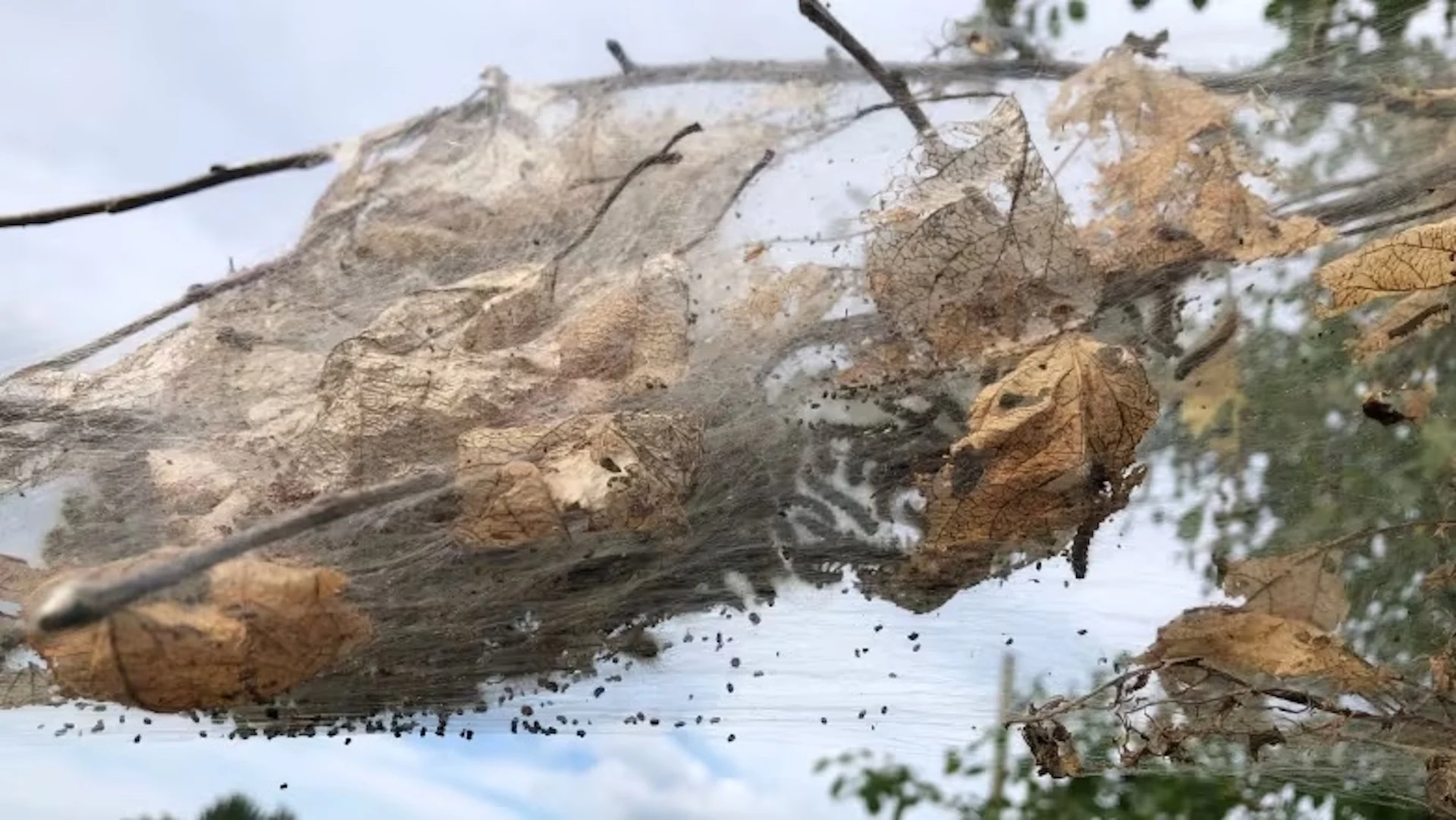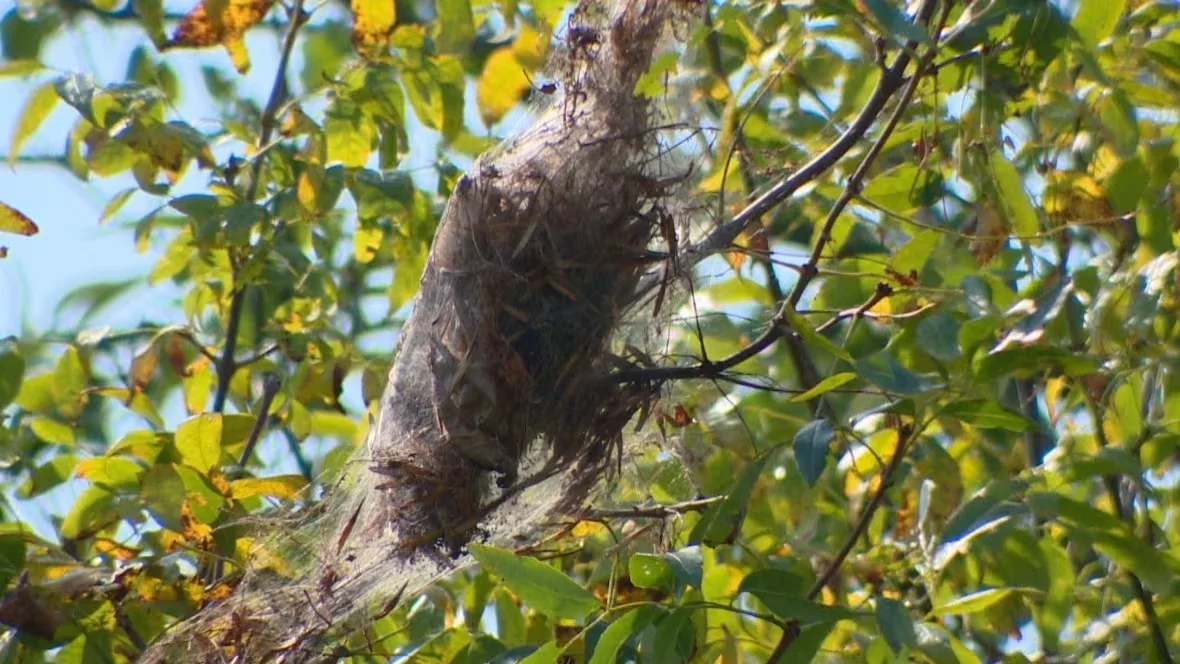
Silky nests in N.B. trees show it's been a good year for the fall webworm
If you can stand getting close enough, it's like a scene from a horror movie — countless long, dark bodies writhe and wriggle inside a silky sack of creepiness.
They can often be seen attached to tree branches around this time of year, but if you think there are more of them around, you'd be right.
Rob Johns, a forest insect ecologist with the Canadian Forest Service in Fredericton, has also noticed more of them this year.
The clumps of cloth-like netting are caused by the fall webworm, a native caterpillar species in New Brunswick.
SEE ALSO: Fuzzy caterpillars: Are they cute? Yes. Should you touch them? Definitely not
Johns said the webworm is a relative of the tent caterpillar and very common in eastern North America. But where the tent caterpillar feeds in the spring, the webworm feeds "later in the season when a lot of insects have sort of run their course," he said.
They typically feed on the leaves of apple, ash, cherry, elm, maple, and other trees and shrubs. Johns said they produce a silk that they use to make tents around their feeding areas.

Rob Johns is a forest insect ecologist with the Canadian Forest Service in Fredericton. He's also noticed an increase in the number of fall webworm tents. (Submitted by Rob Johns)
He said the tents provide climate control and protection from predators. Inside their covered picnic areas, they feed on the leaves.
While they're not the most attractive addition to a tree, Johns said "they're not generally a big problem."
Although they destroy the leaves they've tented around, "because the trees are so close to dropping their leaves at this time of year, their impact is not the same as it is for another insect — where they would be feeding when the leaves are still growing and they're trying to gather resources."
That's why tent caterpillars do a lot more damage — they feed in the spring.
Full-grown larvae can be almost four centimetres in length.
According to Natural Resources Canada website, fall webworms can be yellow with dark stripes and spots, or they may be bluish-black without yellow. The adult moths are nearly pure white and have a wing span of nearly four centimetres.

Fall webworms produce silk with which they construct tents around leaves. (Mia Urquhart/CBC)
"The insects overwinter as pupae in the soil. In June and July, the adult moths emerge from the soil. Females begin laying their masses of eggs in July. The eggs begin to hatch in mid-July."
It's at this point that the larvae build the silky nests now visible in trees all over the province.
Once they finish feeding, they'll either crawl down the trees and build a cocoon, or they attach their cocoon to the backs of leaves that eventually fall to the ground.
Natural Resources Canada also says, "During severe outbreaks, some trees may be completely defoliated. The large nests of webbing containing excrement, cast larval skins and dried leaf fragments are extremely unsightly."
How to kill them
If one is so inclined to kill them, they're fairly easy to dispose of, said Johns, "because they sort of do you a favour by being so clustered, usually on a single branch."
He said the branch with the nest can be cut off and burned or dunked in a bucket of water to drown the caterpillars inside.
As for why there are more nests then usual this year, Johns said population explosions are a normal part of their population cycles.

Some trees may be completely defoliated, according to the Department of Natural Resources Canada. (Roger Cosman/CBC)
"It's fairly common for this sort of cycling to occur where they're not present for a long period of time and then they sort of appear in these one- or two-year pulses."
Johns said there are population records for the fall webworm that date back to the 1950s. Although numbers peak and drop like a heart monitor, said Johns, it's not exactly predictable. He said populations are likely affected by environmental conditions or the ebb and flow of predators.
Anyone wondering about an unknown species can contact the provincial Department of Natural Resources. Or they can email the forest strategy division.
He said officials don't want to "fall behind the eight ball" when it comes to responding to invasive species. He'd rather people reach out to the experts, just to be sure.
WATCH: This moth species has been a menace to Canadian forests
Thumbnail courtesy of Mia Urquhart/CBC.
The story was written by Mia Urquhart and published for CBC News.









